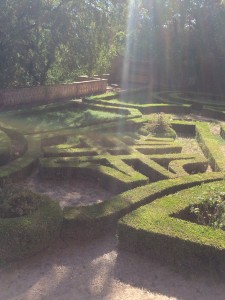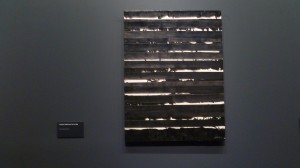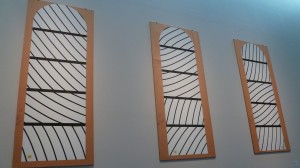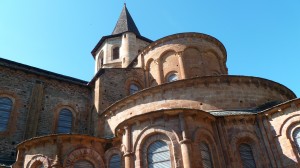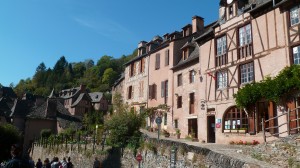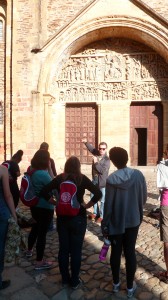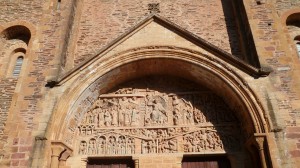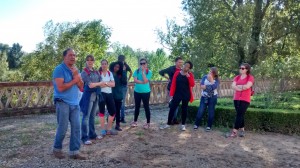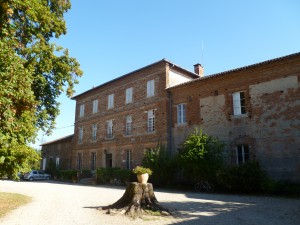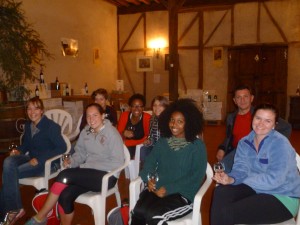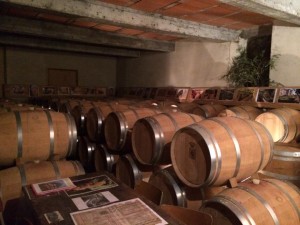My favorite part of our trip was the wine tasting at Château Lastours. The large quantity of stages in the process of making wine was evident during our guided tour. We saw the big barrels and the guide told us that he needs to measure the temperature and density of the liquid every day. In addition, I learned the different ways to make red wine and rosé. For red wine, you ferment the skin with the sugar and juices for several weeks or months. For rosé, you use the same grapes, but you leave it for only a few days so that the wine is weaker. Even though I live near Napa Valley and have been to vineyards multiple times, I had never learned this difference. The Château was beautiful and of course, the wine tasted amazing!
Category: Uncategorized Page 3 of 6
Ma partie préférée de notre petit voyage était la dégustation au Château Lastours. La vaste quantité d’étapes dans le processus de faire du vin était évidente pendant notre visite guidée. On a vu les grands fûts et le guide nous avait dit qu’il faut vérifier la température et la densité du liquide chaque jour. De plus, j’ai appris la différence entre la manière de faire du vin rosé et du vin rouge. Pour le vin rouge, on ferme la peau avec le sucre et jus pour plusieurs semaines ou mois. Pour le vin rosé, on utilise les mêmes raisins, mais on les laisse pendant quelques jours pour que le vin soit plus faible. Bien que j’habite près de la vallée de Napa et je sois allée aux vignobles plusieurs fois, je n’avais jamais appris cette différence. Le Château était beau et bien sûr, le vin était extraordinaire !
Every aspect of our excursion to the Midi-Pyrénées region was unique. We had the opportunity to see the city of Rodez, the charming town of Conques, and visit an amazing winery in Gaillac. We began the excursion with a trip to Rodez to see the Soulages Museum. Soulages’ work demonstrates the ways in which light emphasizes the form and effect of a painting. The importance of light was further emphasized by the stained glass windows in the abbey-church of Saint Foy which were made by Soulages. The town of Conques is characterized by its medieval architecture and rich history of pilgrimages. The architecture and environment of Conques creates a magical atmosphere where art and history are truly alive. I met many people who came from all around the world. The fact that we stayed at the housing for the people doing the pilgrimages and were allowed to share meals with them was very nice. The way in which nature and architecture work together adds a new level to the magic of the town. After, we went to Gaillac for a wine tasting where we learned the intricate process to make wine. This trip was a mixture of different cultural aspects of France from art, food, and history which are present today.
Tous les aspects de l’excursion à la région Midi-Pyrénées étaient vraiment uniques. Nous avons eu l’occasion de voir Rodez, le village de Conques et un vignoble à Gaillac. Nous avons commencé l’excursion avec la ville de Rodez où nous avons visité le musée Soulages qui montre comment la lumière souligne la forme et l’effet d’un tableau. L’importance de la lumière était illuminée par les vitraux de l’abbatiale Sainte-Foy qui ont été construits par Soulages. Conques est caractérisé par l’architecture médiévale et l’histoire riche des pèlerinages. L’architecture et l’environnement de Conques créent une atmosphère magique où l’art est vivant. J’ai rencontré des gens qui viennent de partout dans le monde. Le fait que nous sommes restés dans un hébergement réservé aux pèlerins et nous avons pu partager les repas avec eux était très sympathique. La façon dont la nature et l’architecture de Conques se correspondent rend l’atmosphère encore plus magique. Ensuite, nous sommes allés à Gaillac pour faire une dégustation de vin où nous avons appris le processus complexe pour faire le vin. Cette excursion était un mélange des aspects différents de la culture française dès l’art, la nourriture et l’histoire qui sont évidents aujourd’hui.
An aspect of France that I have always found to be interesting is the cultural tension between modernity and the patrimony. This tension is quite evident in the town of Conques, a small medieval town that has become a tourist destination. It is very strange, even for the tourists, to see souvenir stores selling Chinese-made goods between houses that were built in the fifteenth century. In the nearby town of Rodez, there is a church that represents this exchange between modern life and history; the stained-glass windows in this church are quite interesting because they are a combination of the typical style and the more modern style. This picture is an example of the more modern; the traditional stained-glass windows depict religious scenes and use a lot of colors while explaining the event. The modern style is very different as itdepicts blood molecules. It is strange to see the two different styles in the same church, but it is a good representation of France’s history living with the modernity.
Un aspect de la France que je trouve intéressant est la tension entre la modernité et l’histoire du patrimoine. Cette tension est très évidente à Conques, un village d’âge médiéval qui est devenu touristique. Il est très bizarre, même pour les touristes, de voir les magasins qui vendent les objets qui viennent de la Chine parmi les maisons qui étaient là depuis le quinzième siècle. Dans la ville de Rodez, qui est près de Conques, il y a une église qui peut représenter l’échange entre le moderne et l’historique ; les vitraux de cette église sont très intéressants parce qu’ils présentent une combinaison du style traditionnel et du style moderne. Celui-ci est un exemple du style plus moderne ; les vitraux traditionnels décrivent les scènes religieuses avec beaucoup de couleurs et leur but et d’expliquer un évènement. Le moderne est très différente en montrant des hémoglobines. Il est bizarre de regarder les deux styles dans la même église, mais c’est une bonne représentation de l’histoire de la France qui vive avec la modernité.
During our busy weekend, we stopped at a winery in Lisle sur Tarn for a tour of the château and a wine tasting session. We met the wine maker, a very nice man, and he showed us around the winery where they actually make and store the wine. I was surprised by how much I learned. Did you know that rosé wine is like red, only they take out the skin earlier so it doesn’t get as much of the red dye? There’s a lot of chemistry that goes in to making wine that I never knew about before. I also liked this saying – You raise wine as you would raise a child. See, the batch of grapes is different each year so you have to prepare it differently each time. Just like with children, you need to adapt because each child learns and develops differently. The funny thing is – I’m still not a fan of the taste of wine!
Lors de notre week-end chargé, nous nous sommes arrêtés à un vignoble à Lisle-sur-Tarn pour une visite du château et une dégustation de vin. Nous avons rencontré le vigneron, un homme très gentil, et il nous a montré le château et où ils font et entreposent le vin. J’étais surprise par tout ce que j’ai appris. Saviez-vous que le vin rosé est comme le rouge, sauf qu’ils retirent la peau plus tôt, pour qu’il ne prenne pas autant de la teinture rouge ? Il y a beaucoup de chimie qui va dans la fabrication du vin que je n’avais jamais entendu parler avant. J’ai aussi aimé cette expression – vous élevez le vin comme vous élèveriez un enfant. C’est-à-dire, le lot des raisins est différent chaque année, donc vous devez le préparer différemment chaque fois. Comme les enfants, vous avez besoin de vous adapter parce que chaque enfant apprend et se développe différemment. Le plus drôle, c’est que je n’aime pas toujours le goût du vin !
Dear Readers,
The weekend of the September 26th and 27th Dickinson had its first excursion. We left the city of Toulouse to discover other treasures of the Midi-Pyrénées Region. Heading north to visit two other Departments, Aveyron and Tarn, our first stop was to the Pierre Soulages Museum, recently opened and dedicated to the works of Ruthénois (native of Rodez), Pierre Soulages. The museum’s collections include paintings, engravings, and the famous cardborad stained glass windows, which Mr. Soulages designed and built in 1994.
After the visit, the group had lunch in Rodez and then left for Conques, a village that well deserves the various titles it holds, like “Grand Site de France” and one of the “Plus Beaux Villages de France’, which reinforce the importance of village’s patrimony. That afternoon, our wonderful guide, Mr. Créma, gave us a tour of the Saint Faith Abbey and the treasure, where we can see the relics that have attracted so many pilgrims for centuries. That evening, we had dinner with the pilgrims, and afterwards certain students went to hear the orgue concert in the abbey.
The next morning we woke up early to trek some of the Saint Jack of Compostela trails. Mr. Créma was again our guide, and he taught us not only about the history of Conques and its pilgrims, but also about the surrounding natural environment. An outdoor picnic was the perfect way to end our hike, as well as our time in Conques.
We had one last stop to make: Château Lastours in Lisle-sur-Tarn, a vineyard in the region of Gaillac, where we had a guided tour with the head of the Château and did a wine-tasting, which allowed us to appreciate all the work in wine cultivating that Mr. de Faramond had explained to us before.
I have given you a general resume of our weekend because the seven students who participated are going to share with you their impressions and favorite parts of our excursion of the Midi-Pyrénées.
Happy Reading!
During our excursion, my favorite aspect was visiting the vineyard at Chateau Lastours. I really like the history of the chateau, as well as the remnants of that history that exist today, like the garden and the pigeon coop. However, the best part of the visit was our guide, the head of the vineyard as well as the patriarch of the family. Both the chateau and the vineyard have stayed in the same family for generations, and when our guide spoke about them, I could hear his pride for his family and the history of his business. The passion of Chateau Lastours, for their vineyard as well as their history, was the most poignant part of the trip for me.
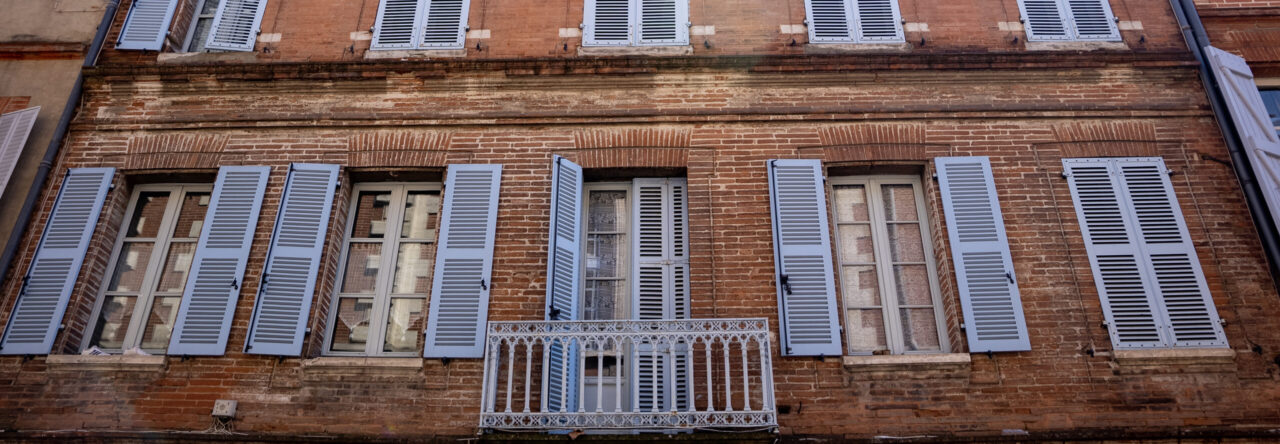
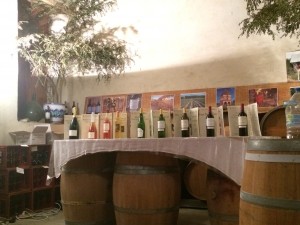
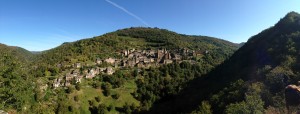
![IMG_20140926_133214_915[2]](http://blogs.dickinson.edu/toulouse/files/2014/10/IMG_20140926_133214_9152-168x300.jpg)
